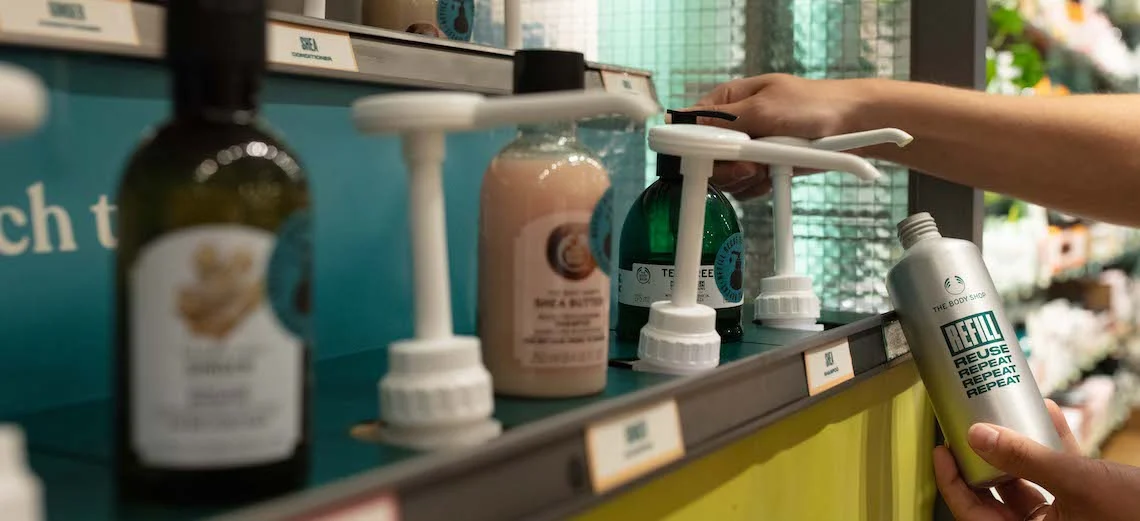The packaging industry is currently experiencing what is probably the biggest period of changes and adaptations in the last 30 years. The European Commission is driving legislative measures aimed at promoting the Circular Economy, that is, trying to keep resources in use for as long as possible and turning waste into raw materials. In line with the obligation to transpose these European rules into Spanish law, the packaging sector is being forced to focus on improving the recyclability of packaging, optimizing resource consumption, replacing virgin material with recycled material, or implementing reusable formats. With these measures, the aim is to reduce both the environmental impact of their packaging and the payment of €0.45 per kilo of virgin plastic applied to manufacture non-reusable plastic packaging, which has been in effect since January 1, 2023.
In this context, packaging for cosmetic products is no exception. Companies in the sector are increasingly adopting packaging formats with lower environmental impact, not only due to legislative obligations but also due to corporate social responsibility or the fact that consumers are increasingly demanding sustainable products. In the case of cosmetic packaging, the function of the packaging is not only to contain and protect the product and facilitate its transportation, but it is also a sign of distinction and differentiation. Therefore, the challenge of adopting low environmental impact packaging is twofold, as it must be environmentally friendly without compromising product protection or appeal to the buyer, something that, as is increasingly being seen, is being achieved thanks to the efforts of cosmetic companies, research centers such as AINIA, packagers, and designers.
The cosmetic packaging sector has been working on several strategies for a few years to reduce the negative environmental impact of its products. The main trends in sustainable packaging could be:
-
Use of new materials from renewable sources: Ceramic products, wood derivatives, materials obtained from waste or agricultural by-products... These raw materials can have their appeal due to the history they confer to the packaging itself, and their renewable nature offers advantages from an environmental point of view. Quadpack or Pujolasos have presented sustainable wooden jar or cap formats. Sulapac has packaging composed of wood waste and other compostable biomaterials, LVMH and Avantium are working on the possibility of using the bioplastic PEF for cosmetic packaging, Faca has already integrated bio-based polyethylene into its jars, and Naya has used mycelium-derived from fungi to safely transport their glass containers. Cardboard is also increasingly being used in cosmetic packaging, although with some barrier material in direct contact with the product. This is the case with some tubes from Albéa, mostly made of cardboard, or the example of Estée Lauder, which has joined the Pulpex consortium to explore the possible use of cardboard bottles for beauty product packaging. PHA packaging deserves a special mention, a compostable and marine-degradable bioplastic that can be obtained from agricultural waste and with which AINIA has experience, both in its production and use, even in the generation of cosmetics, as demonstrated in the context of the European URBIOFIN project.
-
Recycled/recyclable and optimized packaging: The use of recycled material is a growing trend, in part due to the reduction in fees that it can represent, in the case of plastic, but also because it helps to reduce the dependence on fossil origin raw materials. In the case of incorporating recycled plastic, PET is the only one of them with mechanical recycling methods approved by the EFSA to generate high-quality material, even suitable for use in contact with food. Some companies, such as Texen or ActiPack, have already used rPET in their packaging. However, the application of recycled polyolefins, although equally necessary, is more complex due to the lack of mechanical recycling methods authorized for use with sensitive products such as cosmetics. To overcome this barrier, some companies are integrating recycled material into their packaging through chemical methods. This is the case with Amorepacific, which integrates Eastman's Cristal Renew, or Albéa and its chemically recycled PE tubes. The integration of recycled glass or metal is less problematic and there have been cases on the market for years. On the other hand, strategies are being adopted to facilitate the recycling of cosmetic packaging, opting for monomaterial packaging, eliminating unnecessary or incompatible elements with recycling such as some adhesives or metal decorations, incorporating easily separable elements for more selective collection and higher quality recycling, or replacing carbon black, which does not allow proper detection in waste sorting plants. Some companies have also tried to reduce the amount of material used in the packaging, such as Emballator's tubes, which are 10% lighter, or UDN's One-Piece tubes, which use 55% less plastic than a conventional tube.
- The boom of reusable packaging: The recently approved Royal Decree on Packaging and Packaging Waste establishes that companies must promote the use of reusable packaging and facilitate their proper return and treatment. Numerous brands, such as Chanel or Shiseido, already offer their products in durable reusable jars and refillable inserts. These refills use less packaging material and are more easily recyclable. Reuse implies packaging that can be used for the same purpose as the original, and some brands are advancing the marketing of products in packaging that is commercializable in closed circuits where it is easier to control traceability, hygiene, or waste management. Some refillable packaging is also being offered at refill stations, such as the case of Biotherm.
These are some of the approaches towards more sustainable cosmetic packaging, but not the only ones being worked on. The horizon is challenging, and the options are numerous. There is no easy path to this change towards reducing environmental impact, nor a single solution, but what is clear is that improvements require research and innovation, that exploring is fundamental, and that AINIA can help companies on this path.

